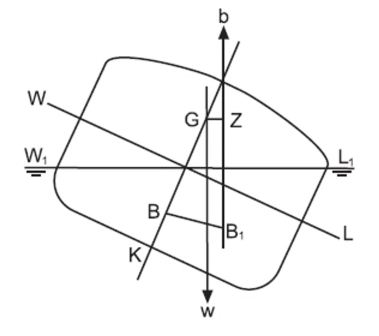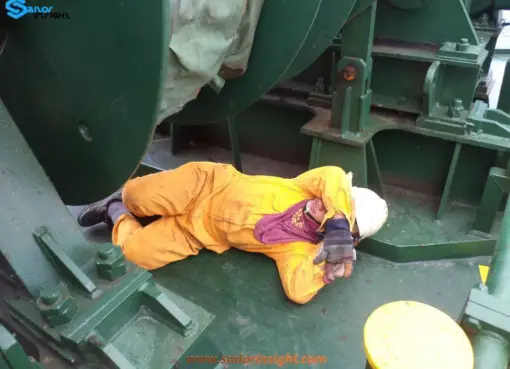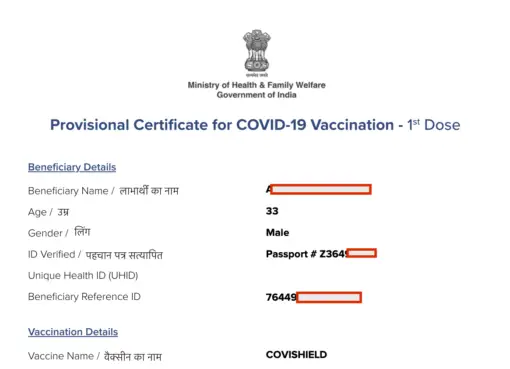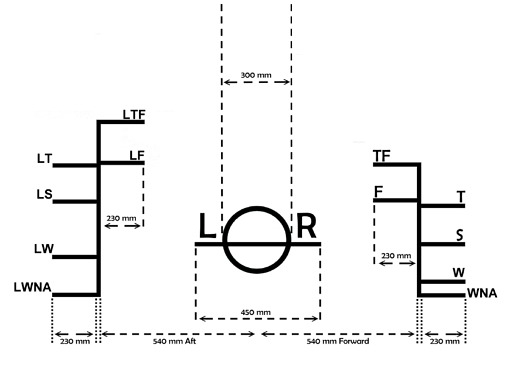The angle of Loll is that angle of heel at which a ship with negative GM will come to rest.
It is an extremely dangerous situation and in extreme cases, a vessel may even capsize.
A vessel with Negative Initial GM will tend to capsize. However when the vessel starts to heel over, her breadth at the waterplane increases. This causes an increase in BMT which may bring the metacentre above the Centre of Gravity (COG) of the vessel. Hence, the angle at which the vessel comes to rest with positive stability is called the Angle of Loll. This is her new initial position after heeling and if further heeled she will return to this position.
Remember that the Transverse metacentre is not on the centre line when the vessel is in the lolled position.
The formula for Angle of Loll is:
tan θ = √2GM/BM
Where θ= Angle of Loll.
The formula for calculating GM at Angle of Loll is as follows:
GM = 2(Initial negative GM) x Sec θ
Keep in mind that the value of GM obtained by the above formula will be positive and not negative.
Now, as we know what is Angle of Loll, let us see how it is different from the Angle of List
ANGLE OF LIST
- It is caused due to COG of the vessel shifting off the centre line of the vessel.
- GM is positive and ship is in stable equilibrium.
- In still water, vessel will remain at this fixed angle of heel and she will remain listed to one side only.
- In heavy weather condition, ship will roll about this angle of list and not about her upright condition.
- To bring the ship back to upright condition, weights may be loaded on the opposite side of the list or discharged from the same side of the list.
ANGLE OF LOLL
- The initial GM of the ship must be negative.
- With increase of heel and the width of the waterplane increasing, BMT will increase, causing the KMT of the vessel to increase and the transverse metacentre may go above the COG of the vessel (refer to figures above).
- It is an extremely dangerous situation and with the action of external forces, vessel may flip over to the opposite side at the same angle of loll.
Now, as we know how to differentiate between the two, let us further look at another important question.
How To Ascertain That Vessel Is At Angle Of Loll And How To Correct It
If a vessel has suddenly heeled at sea or in port, it could be due to the vessel being at Angle of Loll.
The vessel will reach the Angle of Loll, only after she is having a Negative Initial GM i.e, she is in unstable equilibrium.
Some of the crew members may be deputed to sound all the tanks onboard which contains liquids to ensure that there is no unequal distribution of weights about the Centreline of the ship. The same is applicable for other weights too.
The vessel’s transverse stability should also be calculated. Also, the sounding of the seabed around the ship in port should be checked. Before a vessel attains an angle of loll, she attains negative GM. Before reaching negative GM she will be very sensitive to the minutest addition or removal of weights from one side. In other words, she will be very tender.
Once it is ascertained by the above methods that the vessel is at Angle of Loll, the following should be done:
- Move weights downwards, preferably using shore gears.
- Add water ballast to a tank on the heeled side. Preferably this tank should have least width (least moment of inertia) and should be close to the centerline. By this process, the heel may increase to that side but the COG of the ship will move downwards more than had the tank been ballasted on the opposite side.
- Reduce the free surface effect of all the slack tanks.
We hope this article has covered major points about Angle of Loll. In case of any doubts or for any discussions, do comment below.




